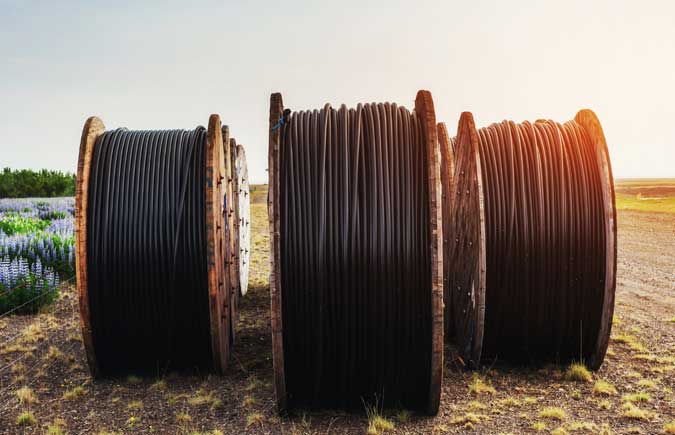Polypropylene: The Future of Cable Insulation Is Already Here
In the world of power cables, the choice of insulation material plays a critical role. It determines the cable’s long-term reliability, performance, and sustainability. While traditional materials like XLPE and EPR have long been the industry standard, a new solution is gaining momentum. Polypropylene (PP) is not only a viable alternative but also a technology that redefines what insulation can achieve.

Rethinking Cross-Linking
Cross-linked polyethylene (XLPE) has been the most widely used insulation material for decades. Its electrical properties are well established, but the production process brings significant limitations. Cross-linking requires energy-intensive curing, introduces byproducts, and results in long degassing times. Manufacturing can also suffer from scorching, leading to visible defects like “ambers” in the insulation layer.
Even high-performing thermoset materials come with inherent complexity and cost.
The Polypropylene Breakthrough
Polypropylene insulation solves many of these challenges with a thermoplastic approach. It eliminates the need for cross-linking, enabling a much simpler and cleaner production process. The benefits are both technical and operational:
- Lower energy usage and faster production
- Cleaner processing without byproducts or scorching
- Stable and continuous single-step manufacturing
- Longer insulation runs and reduced scrap
- Higher operating temperature of 110°C
- Full recyclability, supporting circular economy goals
Despite its simpler processing, PP offers excellent mechanical and thermal properties. Lack of need for degassing and high operating temperature makes it especially suitable for HVDC application.
Proven in the Field
PP insulation is not a new experiment. The first medium-voltage cable using this technology was installed in 2006 in Italy. That cable is still in operation today, nearly twenty years later. According to Prysmian’s 2020 data, over 50,000 kilometers of PP-insulated cables have been deployed globally.
Some of the new major infrastructure projects include the SuedOstLink and A-Nord HVDC projects in Germany, as well as the land cable connection for the Sofia offshore wind farm. Leading European system operators, including TenneT, Terna, Amprion, and Enel, have either already integrated PP cables into their networks or in the process of installing them.
Standardization Is Evolving
Industry standards are now adapting to support thermoplastic insulation. The Italian CEI 20-86 standard was the first to include PP. The broader European CENELEC HD 620 S3 standard now covers insulation types including PP (PP-TPE), XLPE, EPR, and HEPR. It defines similar electrical testing across materials but reflects the unique properties of PP in its mechanical test criteria, including higher elongation at break and longer oven ageing duration.
Enabling Materials from Premix
Premix is proud to support the transition to PP-based cable systems with its advanced semiconductive materials. Our PRE-ELEC® PP18220 compound is specifically designed for use in medium and high voltage cable conductor and insulation screen. It offers excellent conductivity and mechanical compatibility with PP insulation, while retaining all the benefits of a thermoplastic material.
We are also preparing to launch a strippable version for insulation shields, further enhancing installation efficiency. Our compounds are compatible with widely used PP insulation materials such as Hifax CA 7910 A (PP-TPO).
A Smarter Way Forward
Polypropylene is no longer just an alternative. It is a well-proven insulation solution that meets the demands of modern cable applications. As the industry moves toward more sustainable, cost-effective, and high-performance systems, PP stands out as the material of the future — and it is ready today.
Want to explore how Premix materials can support your cable innovations? Let’s talk.
